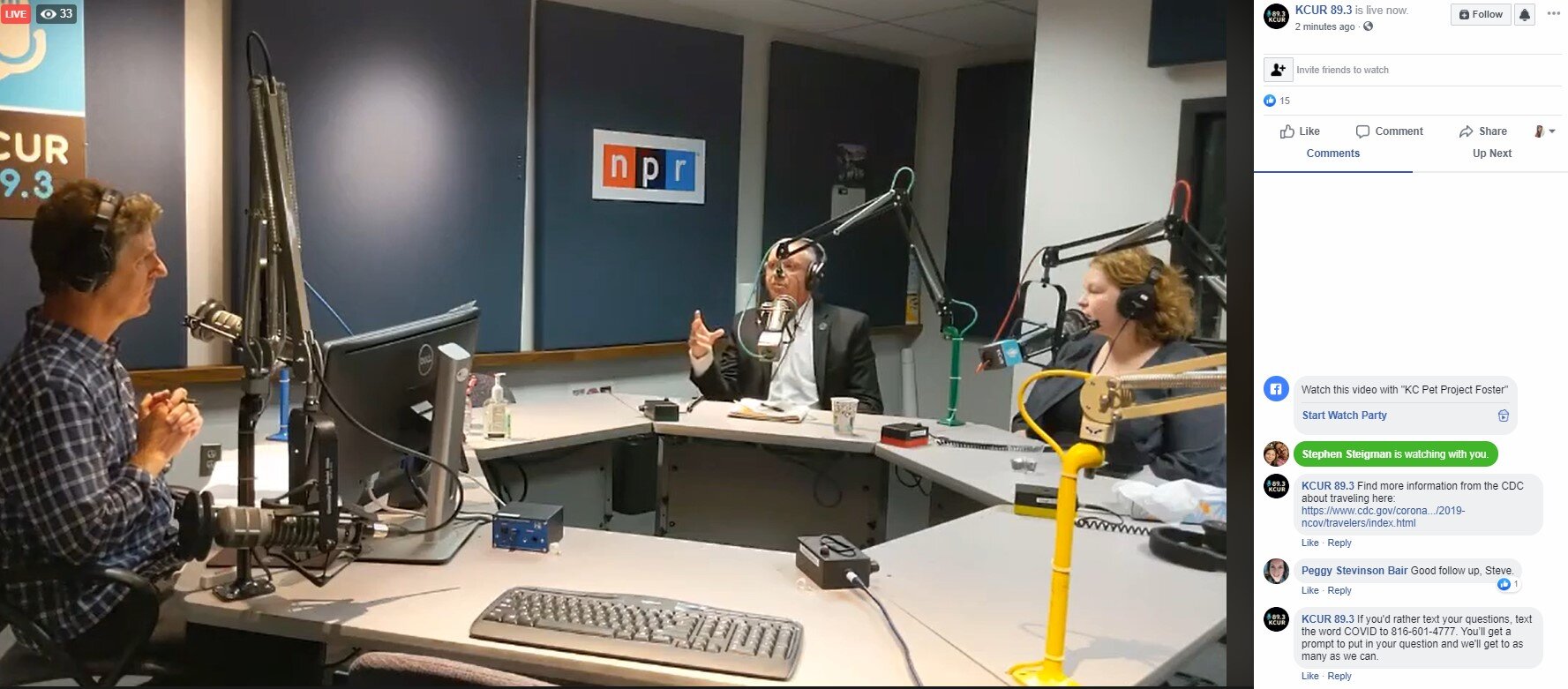Strategy: Your live talk show can reach broader audiences, here’s how to do it
KCUR’s live talk show Up to Date is experimenting with Facebook Live to reach a broader audience.
Talk shows offer a great platform to engage with your audience, especially now, as we strive to continue to connect during a pandemic. Here are some ways to maximize your reach and broaden your audience.
Know your audience
Clarify who you are trying to reach to boost your engagement tactics.
E.g. parents of children in K-12. A good chance to use social and online tools: Ask the school administration to help reach parents; find Facebook page groups; schools have newsletters. (Vermont Public Radio does this excellently with their podcast But Why?)
E.g. immigrant and refugee diasporas. Lean on existing partnerships - or develop new ones with local nonprofits - to find out how to best connect. Use those channels to get out the message about your show. You may need to make phone calls, send mailers and/or get materials translated.
E.g. people thrust onto the front line of public health: janitors, garbage removers, burial service providers, baristas. Search social media (try Twitter advanced search or Facebook keyword search) to find and connect with local people in these jobs. Pro tip: Search “I” and “coffee” or “I” and “garbage” to increase chances of finding first-person stories.
Make it easy for people to reach you
Post a story on your site with details about the show topic and how to submit comments or questions ahead of the show.
If you use a texting service, such as GroundSource or Public Input, ask people to text comments/questions to you. (Side Effects Media, in partnership with WFYI, has used Public Input to build their texting club and drive WFYI’s talk show, All In.)
If you use Hearken, embed a form with questions.
You can also embed a Google form to solicit contact info and questions. (See this example from KCUR.)
Ask people to send an email or leave a voicemail. If soliciting email, be sure to direct people to fill out the subject line with “Covid K-12” or something that would help you organize the messages.
Promote, promote, promote
For social media posts: Your perspective matters. <Station name/name of collaborative> What is the impact of coronavirus on you or your community? Text xxxxx with your questions, and we’ll answer them.
For broadcast promos (customized for each partner station): Shape our coverage of coronavirus. Ask your questions by leaving us a voicemail at XXX-XXX-XXXX and we will answer them on Friday, March 27 on a special call-in show.
How to work with online groups
Neighborhood associations have listservs; faith communities have Facebook groups; sports leagues have email lists. These are robust streams of online communication that you could tap into by forming partnerships. Partners can collaborate in a few different ways:
Share your call out for questions on their pages, listservs, emails, etc.
In your on-air promos, reference your partnership with the organization.
We’re working with <name of partner> to shape our coverage of coronavirus. Go to our website at xxxx.org to submit your questions or text us at xxxxx.
Collaborate with other media to solicit questions. You can potentially broker a trade for airtime or ad space.
The more transparent, the better
Have both your news director and general manager cut spots talking about why they believe in this approach and inviting people to ask their questions. If you’re at a community license, enlist your board members and community advisory board members. They are your ambassadors and community connectors as well.
Mention the approach in your station’s newsletter, and in your publication if you have one.
Produce a two-way to share what you’re learning through this coverage.
Finally, remember to share your successes and challenges with us! We’re here for you.


